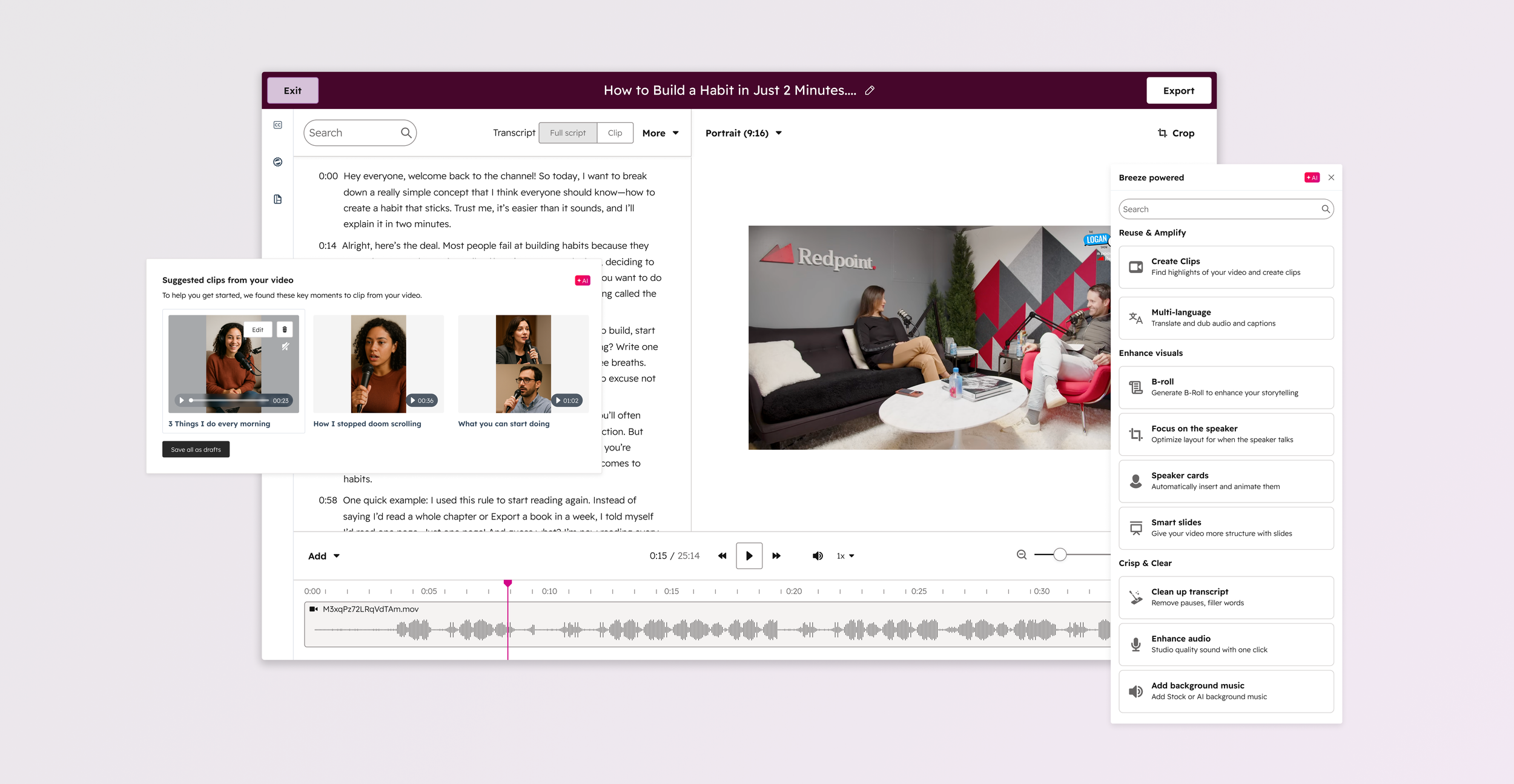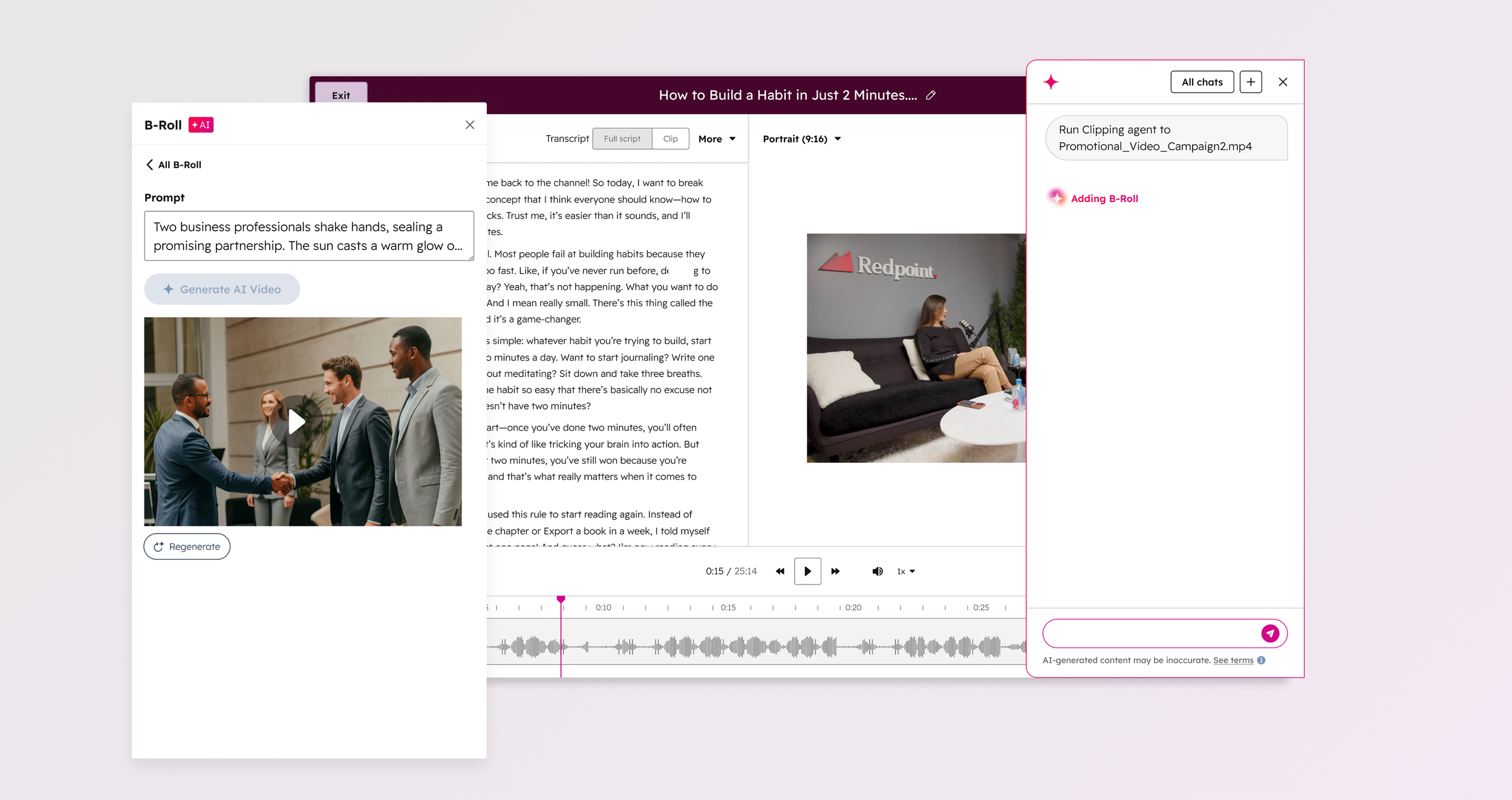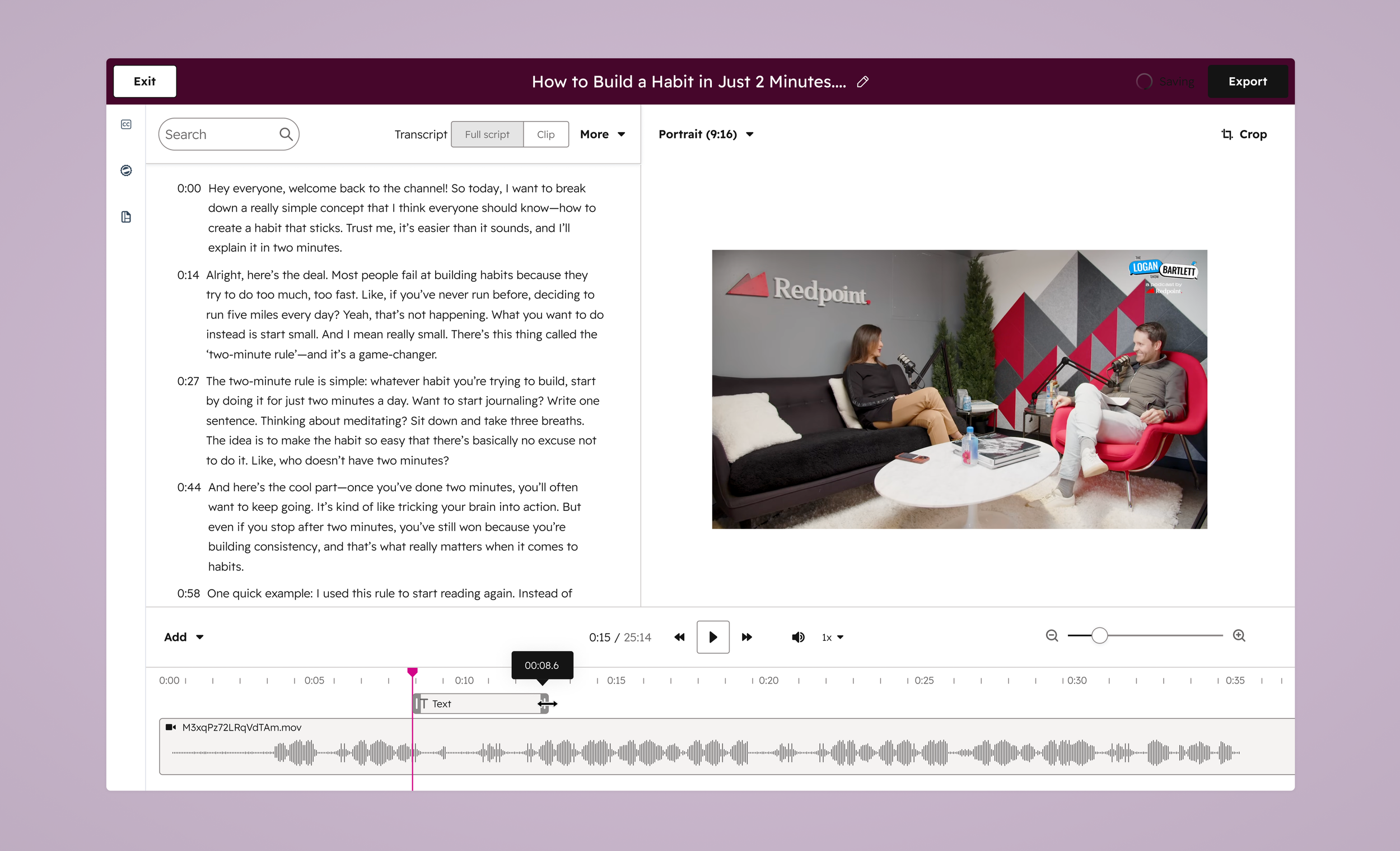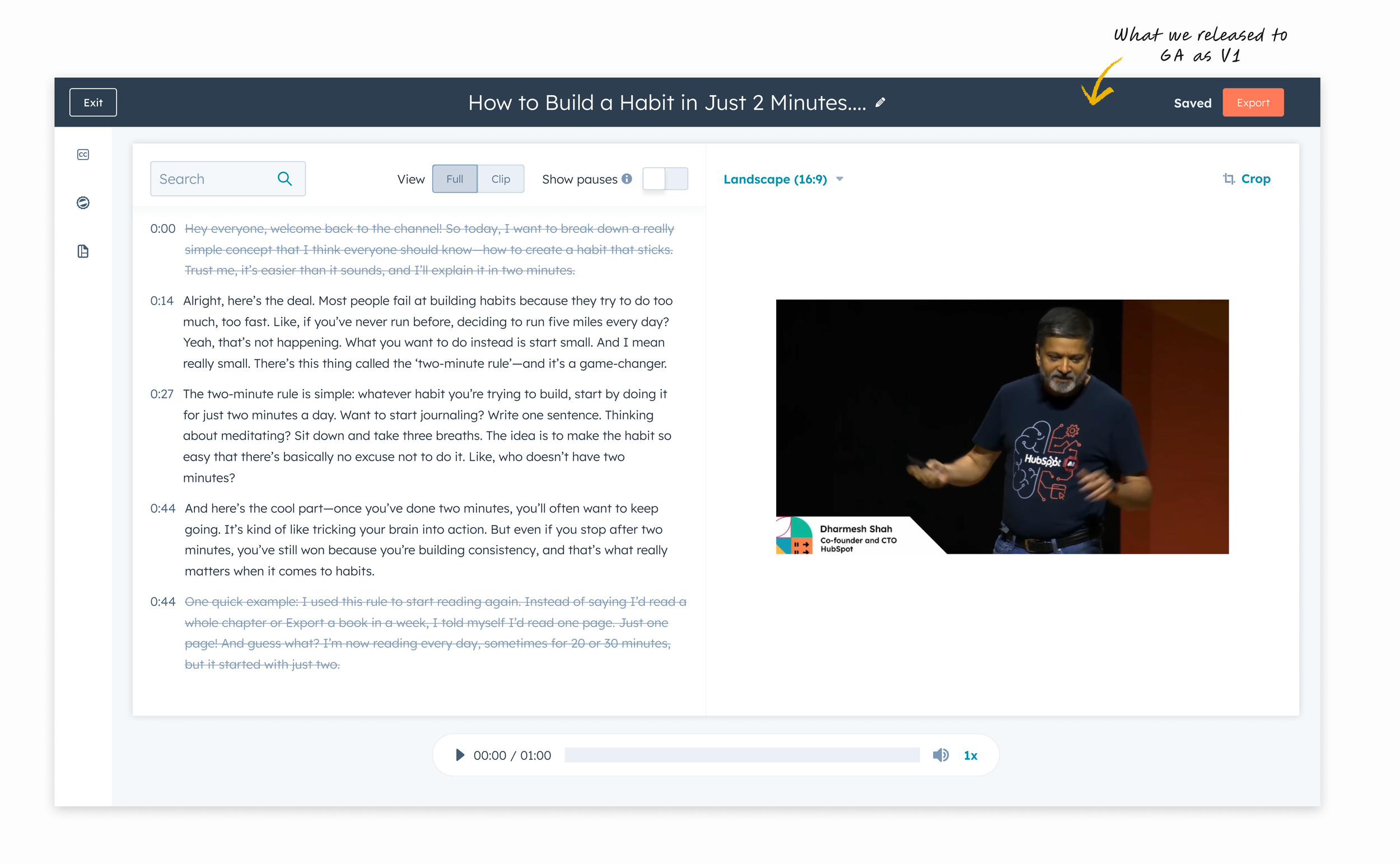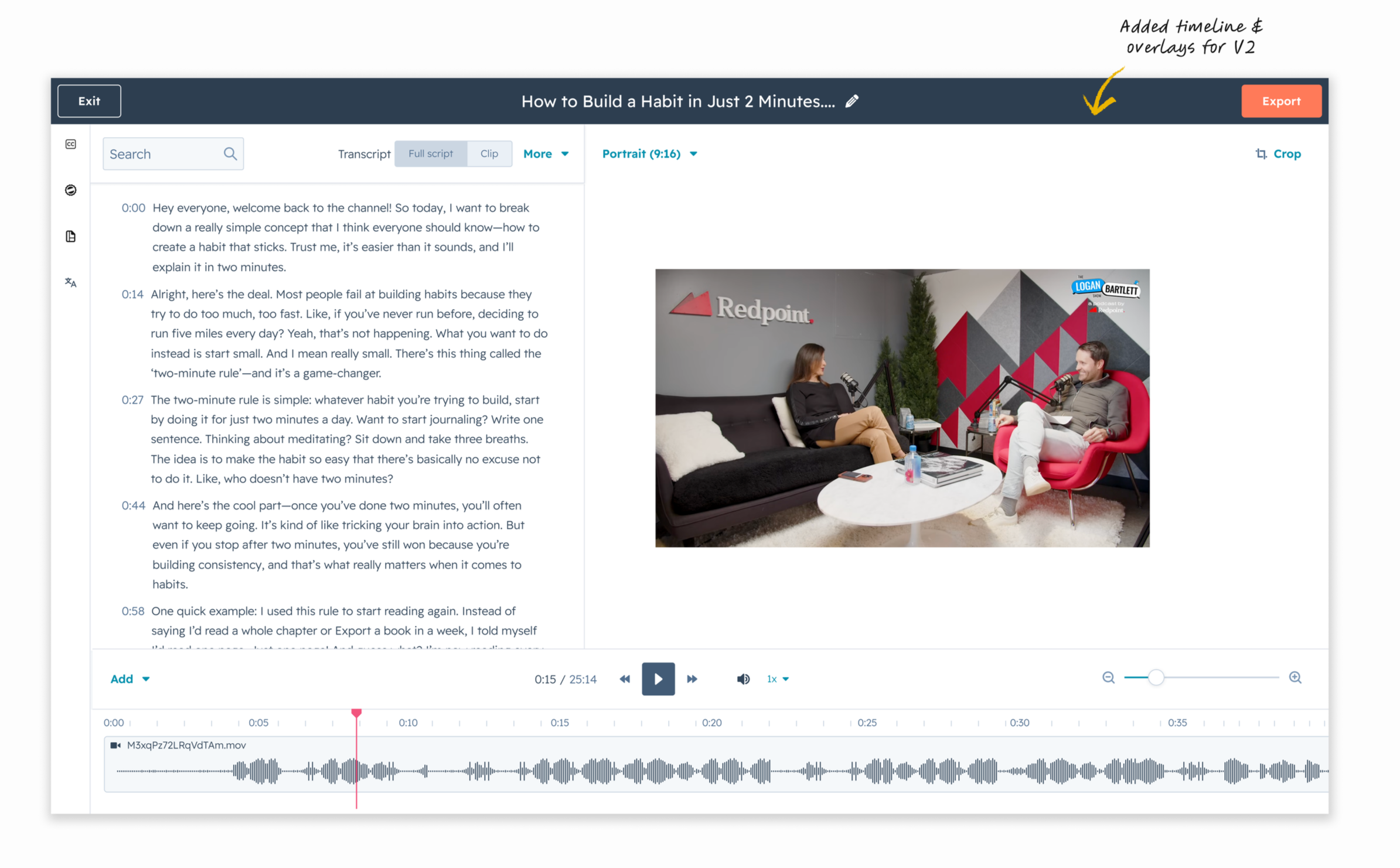Defining HubSpot’s Video Creation Strategy: From Underused Alpha to 6× Export Growth
I led the vision and UX strategy for HubSpot’s AI-powered Clip Editor: Transforming it from a low-adoption alpha into the foundation for our video creation ecosystem. By reframing the problem from “fix the editor” to “make video editing native to HubSpot”, we increased exports by 6× and established the design framework for future AI-media tools.
Role
Lead Product Designer
Timeline
6 months
Team
Product, Engineering lead, Cross-hub team
Before and After
The Situation
HubSpot’s first AI-powered Clip Editor had launched quietly in alpha with ~1,000 testers, yet fewer than 10 users exported clips weekly. With video rising as a core strategic pillar for Content Hub, the challenge wasn’t adding features; it was defining how short-form video creation fit into HubSpot’s broader content workflow.
The insight
Through 10+ power-user interviews and Amplitude behavior analysis, I uncovered a clear gap between interest and integration:
Customers wanted to create clips inside HubSpot: they just couldn’t find where to do it or fully trust what the AI produced.
The experience was disconnected from the platform, basic editing features were missing, and it produced unpredictable AI output.
In short, the opportunity wasn’t “build a better editor,” it was: “make video creation feel native, reliable, and fast“.
“We don’t have the fancy programs or a full-time video editor… we just want to clip a 1-minute moment and post it. If a boomer can figure this out, anyone can.”
“It’s kind of a game changer if it’s good… We don’t want to burden our video team, but if our marketing specialists could clip yesterday’s webinar, it unlocks a lot.”
“I’m by no means a video person. It’s just fallen into my hands kind of thing. We do a webinar once a month - we want to get more out of them but I generally don’t have a lot of time to give to it. ”
Strategy & Decisions
As the Lead Designer, I defined a cross-hub strategy that balanced short-term adoption with long-term platform alignment.
1. Establish a UX vision across teams
→ Framed a phased roadmap and presented it to leadership to unify Media Editing, Content, and Social teams around a shared video experience.
→ Anchored success metrics on activation and export quality, not just usage.
2. Deliver value before the tool opens
→ Replaced the empty state with AI-generated clips, instantly demonstrating value and driving first-session engagement.
→ Partnered with Engineering to improve AI relevance by training on brand and industry data.
3. Embed video creation into existing HubSpot flows
→ Added six new entry points (File Manager, Social, File Picker, etc.), transforming video from a hidden feature into a discoverable workflow.
→ Introduced shared editor patterns for layout, timeline, and overlays — reducing onboarding friction and reinforcing platform consistency.
4. Balance experimentation and scalability
→ Adopted a “low-risk validation loop”: ship, measure, iterate weekly using Amplitude dashboards.
→ Proved model-driven UX improvements faster than traditional research cycles.
Variations and reviews
What we released to GA in May
Added timeline and overlays for August
Results
Business impact: Increased video activation 6×, validating short-form video as a scalable product area.
Platform impact: Established the video editing AI model adopted in upcoming tools like Social Composer and Remix.
User impact: Improved trust and ease of use, turning an experimental AI demo into a reliable, everyday editing tool.
What This Work Enabled
Shifted the org’s framing from “build another editor” to “unify media creation across the Hub.”
Created the foundation for AI-assisted editing patterns (timeline, auto-clipping, overlays).
Unlocked investment in video creation as a key differentiator for HubSpot’s AI Content strategy.
Weekly Active users and Activation chart
Removing the Editor entry point from a dropdown to a standalone button catapulted our conversion rate
Key Learnings
Design AI as a trust system: AI tools succeed or fail based on user confidence. Latency, prompting, and rendering time aren’t just technical variables, they directly shape how “smart” and reliable the system feels.
Build feedback loops, not one-off studies: The most product teams learn through continuous experimentation. Every release should double as a lightweight test that informs the next iteration.
Next Steps
Simplify editing through automation: Explore ways to automate repetitive editing tasks (using agents, vibe-based editing, or workflows) to make video creation faster and lower-effort while keeping users in control.
Deepen personalization: Integrate CRM and brand data into AI models so marketers can instantly generate tailored, on-brand clips. The next frontier is context-aware creation, where HubSpot’s data makes every piece of content feel handcrafted.
